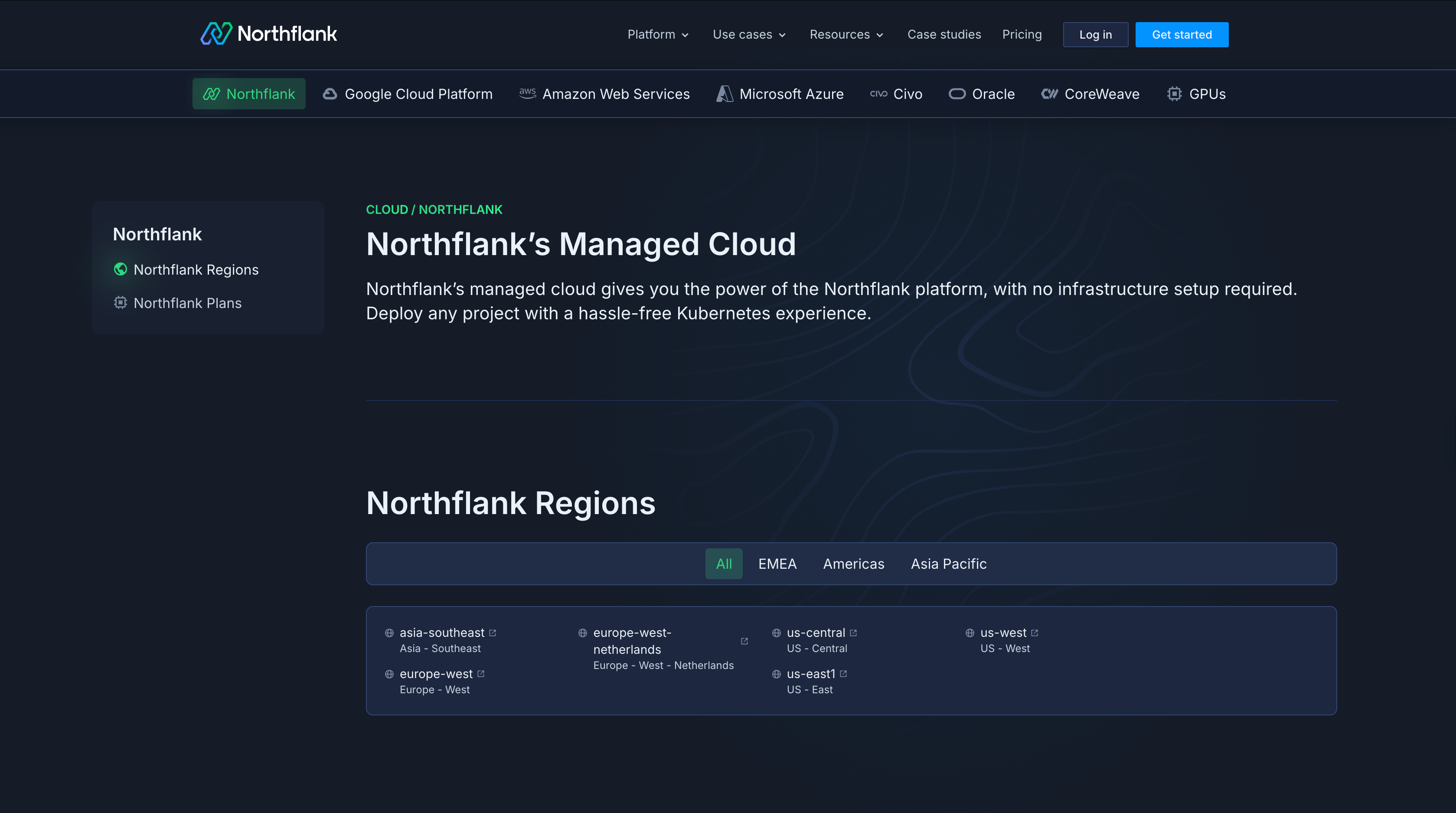

What is managed cloud hosting? Choosing the right platform
Managed cloud hosting is a service where a provider handles your infrastructure, server management, and operational tasks while you focus on building and deploying code. Unlike traditional hosting, it runs on cloud infrastructure (AWS, GCP, Azure) while abstracting away the complexity, giving you cloud power without a dedicated DevOps team.
Managing cloud infrastructure shouldn't slow down shipping code. Yet many development teams find themselves caught between two extremes: traditional shared hosting that's too limiting, or raw cloud providers that demand too much operational overhead.
Managed cloud hosting bridges this gap, but the market has moved far beyond simple "managed WordPress hosting" packages. Microservices, containerized workloads, and API-driven platforms now need a different approach entirely.
This guide breaks down what managed cloud hosting means in 2025, what to look for, and how to choose the right solution for your application.
Managed cloud hosting is a service where a provider handles the infrastructure, server management, and operational tasks of running your application in the cloud, while you focus on building and deploying your code.
Unlike traditional hosting, where you're locked into specific server configurations, managed cloud hosting runs on cloud infrastructure (AWS, GCP, Azure) but abstracts away the complexity. The provider handles:
- Server provisioning and configuration
- Security patches and updates
- Monitoring and alerting
- Backup and disaster recovery
- Scaling infrastructure as needed
- Network configuration and load balancing
You get cloud infrastructure power without needing a dedicated DevOps team to manage it.
Choosing between hosting options can be confusing. Managed cloud hosting gives you cloud-level resources with the convenience of managed services, striking a balance between control and operational simplicity.
| Hosting type | What it offers | Who manages what | Best for |
|---|---|---|---|
| Shared hosting | Server space shared with hundreds of other sites | Provider handles everything, but resources are extremely limited | Simple websites and blogs with predictable traffic |
| VPS (Virtual Private Server) | Your own virtual server slice with dedicated resources | You manage OS, security patches, updates, configurations | Users who want control and have technical expertise |
| Managed cloud hosting | Cloud infrastructure (AWS, GCP, Azure) with managed operations | Provider manages infrastructure; you handle code and deployment | Applications that need to scale without a dedicated DevOps team |
| PaaS (Platform-as-a-Service) | Fully abstracted platform where you just push code | Provider manages everything from infrastructure to scaling | Developers who want zero infrastructure management |
Not all managed cloud hosting is created equal. When evaluating providers, ask these questions:
- Can you deploy to multiple clouds? Being locked to one vendor (AWS, GCP, or Azure only) limits your flexibility and negotiating power.
- Does it auto-scale based on traffic? Automatic scaling is essential for handling traffic spikes without manual intervention.
- Can you deploy globally? Multi-region deployment improves performance and provides redundancy for your users worldwide.
- What security is included? Look for automated SSL/TLS, DDoS protection, security patching, and compliance certifications.
- How do you deploy code? Git-based deployments with CI/CD integration and preview environments make shipping faster and safer.
- How quickly can you deploy? The difference between minutes and hours compounds over time and affects your ability to respond to issues.
- Can you easily rollback? When something breaks, one-click rollbacks to previous versions can save you from extended downtime.
- How much control do you need? Providers range from full management (they handle everything) to infrastructure-level management (you handle application details). Choose based on your team's expertise.
- Is pricing transparent? Understand whether you're paying for provisioned resources or actual usage, and watch for hidden fees on data transfer, API calls, or additional environments.
- Does it support your specific workload? If you're running containers, microservices, database-heavy applications, stateful workloads, or batch jobs, verify the provider has native support rather than workarounds.
Managed cloud hosting works best when your application needs have outgrown simple hosting, but you don't want the overhead of managing raw cloud infrastructure.
| Choose managed cloud hosting if: | Look at alternatives if: |
|---|---|
| You're working with containers, microservices, or applications that need to scale dynamically | You're running a simple content site or blog with predictable traffic (traditional hosting is fine) |
| Your team is developer-heavy without dedicated DevOps engineers | You have a skilled DevOps team that wants full infrastructure ownership (raw cloud is better) |
| Deployment speed matters and you want to ship features fast | You have complex, unique infrastructure requirements that demand granular control |
| You're scaling a startup or SaaS product with growing, unpredictable traffic | Your requirements are very basic and don't justify the additional cost |
| Your application has outgrown shared hosting but you don't want to become a cloud expert | You need very specific infrastructure configurations not offered by managed providers |
Northflank takes a developer-first approach to managed cloud hosting, designed specifically for modern application architectures.
Instead of limiting you to proprietary infrastructure, Northflank runs on your cloud accounts (AWS, GCP, Azure, Civo, Oracle, or bare-metal) or on Northflank's managed cloud, giving you flexibility without vendor lock-in. You get the benefits of major cloud providers with the operational simplicity of a fully managed platform.

What makes Northflank different:
- GitOps-native workflow: Connect your GitHub, GitLab, or Bitbucket repository, and Northflank automatically builds and deploys on every commit. No manual steps, no complex CI/CD configuration.
- Built for containers and microservices: Native support for Docker containers, Kubernetes under the hood, and first-class support for complex microservices architectures. Deploy multiple services, databases, and cron jobs as a unified application.
- Instant preview environments: Every pull request can spin up an isolated environment for testing before merging to production. No more "works on my machine" issues. (See how)
- Bring your own cloud or use ours: Bring your own cloud or use ours: Deploy to AWS, GCP, Azure, Civo, Oracle, or bare-metal for complete control and billing transparency. Or use Northflank's managed cloud infrastructure.
- Developer-friendly pricing: Pay for what you use with transparent, resource-based pricing. (See full pricing details)
- Full-stack platform: Beyond compute, Northflank includes managed PostgreSQL, MySQL, MongoDB, Redis, and other addons. Everything you need to run production applications without juggling multiple services.
Northflank is built for developers who want to focus on code, not infrastructure. If you're building a SaaS product, API platform, or containerized application, Northflank handles the operational complexity so you can ship faster.
Learn more about Northflank's managed cloud approach or see how Northflank's cloud infrastructure works.
To simplify your infrastructure, start building on Northflank's managed cloud platform and deploy your first application in minutes, not hours. Read more about what managed cloud means, book a demo with an expert engineer to discuss your specific requirements, or get started today with the free sandbox.